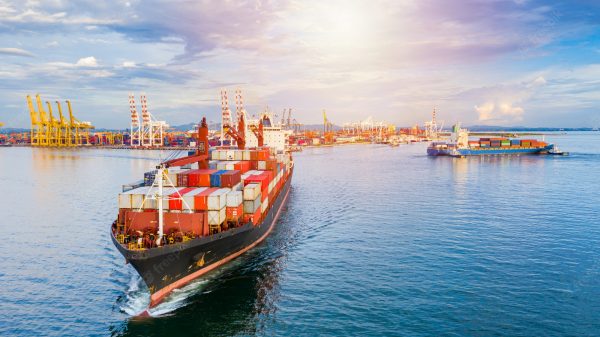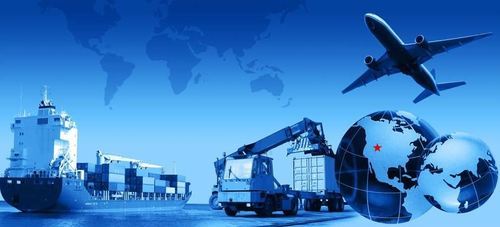International Transportation
International transportation is the movement and passage of goods across the borders of one or more countries and reaching the destination country. Humans have been in need of trade and commerce since the past and this process has been associated with transportation since the past. But the important point in this case is the need to comply with some international requirements and laws that we do not face in domestic transportation and it is enough to comply with some domestic standards and procedures for transportation. Portable shipments that can be transported internationally may be parcels, goods, or letters, and the methods of transportation, the way of packaging, and other requirements and rules governing their transportation are different and must be observed.
Shipping Procedures
Normally, there are three methods of transporting goods by land, sea and air, and exporters use one of these three methods to transport their goods.
1. carrier
Basically, it is a legal entity that, in the form of a transport company, enters into a contract with the exporter and at the same time undertakes to send the desired cargo to the destination. Carrier companies either own the means of transport themselves, or lease them and use them for international transport. In general, it can be said that the entire process of transporting goods, from loading to customs procedures, is carried out by carrier companies and under their supervision; Therefore, in terms of the burden of responsibility, their duty is heavier than that of forwarding companies.
2. Forwarding
Forwarding companies actually act as an intermediary between the exporter and the shipping company. That is, in exchange for receiving an amount from the exporter, they provide the basis for sending their goods through a transport company. Using the forward method is cheaper and more economical than the carrier method, but since the forward companies only play the role of intermediaries and are not the owners or renters of the means of transportation, they bear less responsibility.
International Transport Contract
In international transport contracts, in addition to mentioning all the things that are required to be mentioned in other commercial contracts, such as the details of the parties, the contract amount and payment method, force majeure conditions, duration, etc., it is also necessary to mention more specialized things in the field of international transport. The items are as follows:
– Specifications of portable goods
– Route and method of transportation
– Responsibilities of sender and receiver
– Obligations and responsibility of the transport operator
– Destination and place of delivery of goods
– Insurance
– Permissibility or non-permissibility of goods in several stages
One of the most important issues regarding international transportation contracts is the laws that govern it. The laws that such contracts face include the following:
– International air transportation: Chicago Convention and Warsaw Convention
– International land transport: CMR Convention and Carnet Convention
– International maritime transport: Brussels Convention, Hamburg Convention and Rotterdam Regulations
Disadvantages and Advantages of Transportation Methods
1. Air Transportation
Transportation by air is a relatively new method in the goods transportation system. In most countries, there are special air terminals for cargo. Despite the fact that this method is less used, using air transportation is very useful for moving cargo of perishable goods or things that for any reason we want it to reach its destination quickly.

Advantages
– The goods will arrive as soon as possible
– Low perishability of goods
– Keeping goods safe
– Less hassle of moving
Disadvantages
– High transportation costs of this method
– The impossibility of moving some goods in this way
2. Road Transportation
One of the main and oldest methods of transportation is road transportation in the world. Due to the many trade relations that Iran has with its neighboring countries, it is more common to use this method and move goods by truck.

Advantages
– Accessibility for most people
– The best way to transport between nearby countries
– There is no need to unload cargo at ports.
– Low cost of transportation
– Less time for the goods to arrive at the destination, compared to maritime transportation
– Lower cost of packaging
Disadvantages
– There is a possibility of spoiling the goods.
– It is not possible to export goods in large quantities.
– The risk is higher.
– It is not suitable for export to distant countries.
3. Maritime Transportation
Due to the access that most countries have to open waters, most of the goods are transported by sea. Most of the process of exporting goods in Iran takes place through the waters of the Persian Gulf and the Caspian Sea.

Advantages
– Its cost is lower than the air method.
– Suitable for exporting goods to distant countries
– Suitable for exporting high volume goods
Disadvantages
– The possibility of danger and natural accidents in this method.
Up To Sum
The development of trade relations due to the relative conditions of countries in the production of goods and products can be greatly affected by the conditions of international transportation. International transportation depends directly on the internal infrastructure of each country and the facilities, according to which they should choose the best transportation method. In addition, it is necessary to comply with international transport laws, requirements and protocols in different ways.


